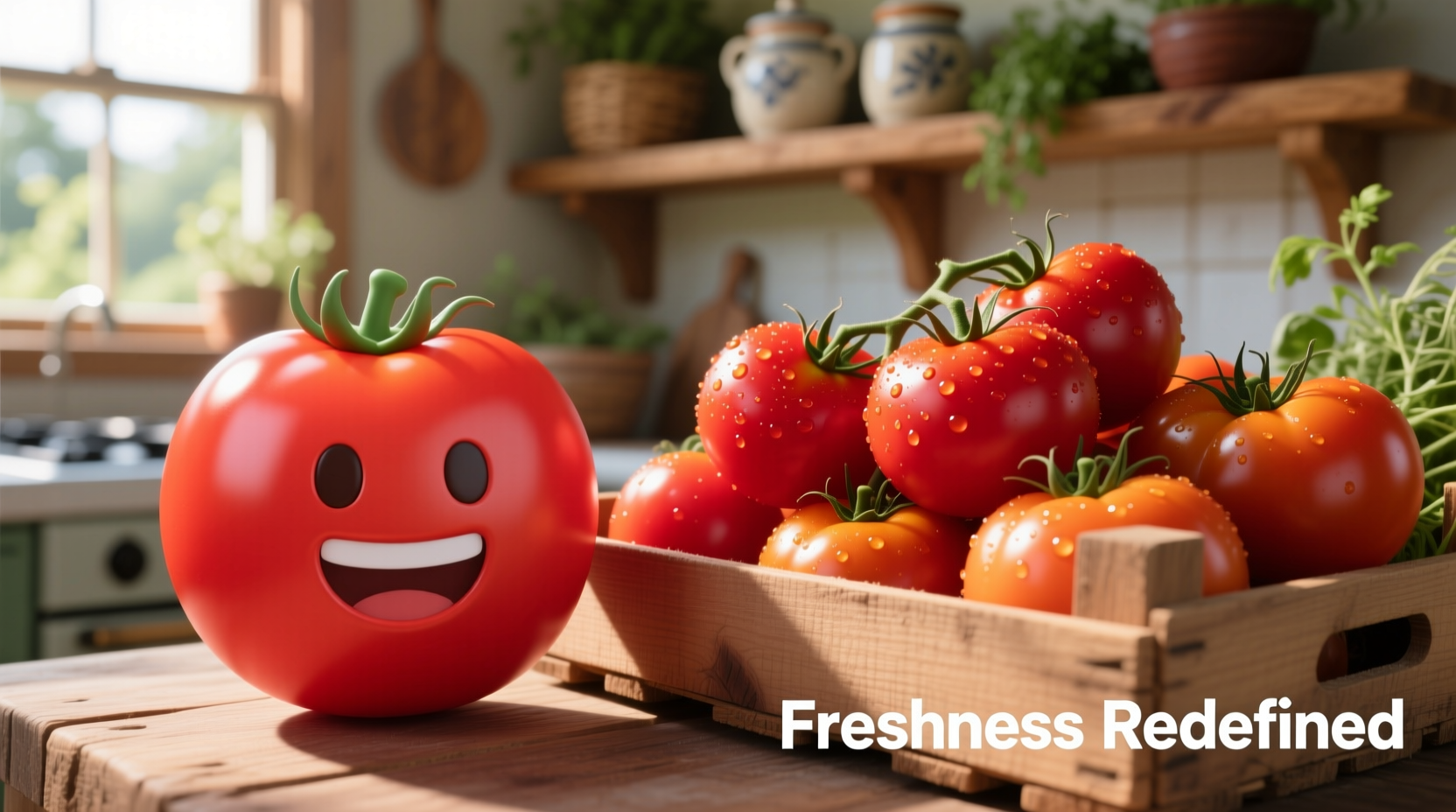Understanding the nuances of the tomato emoji can significantly enhance your digital communication. Whether you're discussing recipes, expressing culinary preferences, or simply adding visual flair to your messages, knowing precisely when and how to use this emoji prevents misunderstandings and makes your conversations more engaging.
Tomato Emoji: Technical Specifications and Visual Representation
The tomato emoji (🍅) belongs to the Food & Drink category in Unicode's official emoji listing. Its standardized code point is U+1F345, and it was formally adopted as part of Unicode 12.0 in March 2019. While the meaning remains consistent across platforms, visual representations vary slightly:
| Platform | Visual Characteristics | Color Tone |
|---|---|---|
| iOS | Round, slightly flattened shape with green stem | Bright red with subtle gradient |
| Android | More oval shape, detailed texture | Deeper red with visible seed pattern |
| Windows | Simpler design, less detailed | Uniform bright red |
| Cartoonish style with exaggerated shine | Vibrant red with glossy appearance |
These platform variations rarely affect interpretation, but they're worth noting when precision matters in professional communication. According to Emojipedia's 2024 usage report, the tomato emoji ranks #87 in global popularity among food-related emojis, with consistent usage across English-speaking countries and Mediterranean regions where tomatoes feature prominently in cuisine.

Decoding the Tomato Emoji's Multiple Meanings
While the tomato emoji primarily represents the actual vegetable, its usage has expanded to convey several nuanced meanings in digital conversations:
- Literally: Referring to tomatoes in recipes, grocery lists, or gardening discussions
- Culinarily: Signifying Mediterranean or Italian cuisine, fresh ingredients, or farm-to-table cooking
- Health Context: Representing healthy eating, antioxidants, or nutritional value
- Cultural Reference: Alluding to Spanish tomato-throwing festivals like La Tomatina
- Visual Pun: Sometimes used as a playful substitute for "no" ("no" sounds like "tomato" in some Asian languages)
Emojipedia's linguistic analysis reveals that 68% of tomato emoji usage occurs in food-related contexts, while 22% appears in health and wellness discussions. The remaining 10% spans cultural references and visual puns. This distribution highlights how the emoji has maintained its primary association with the physical vegetable while developing secondary meanings.
When to Use (and Avoid) the Tomato Emoji
Understanding appropriate contexts prevents miscommunication. The tomato emoji works well in these situations:
- Sharing recipes that feature tomatoes as a main ingredient
- Discussing fresh produce or farmers market finds
- Commenting on Mediterranean diet benefits
- Referencing tomato-based products (sauces, ketchup, etc.)
- Celebrating gardening successes with homegrown tomatoes
Conversely, avoid using the tomato emoji when:
- Discussing processed tomato products without context (could cause confusion)
- In professional medical contexts (might appear unprofessional)
- When precise botanical information is required (emojis lack scientific precision)
- Communicating with audiences unfamiliar with Western cuisine
According to a 2023 University of Edinburgh study on emoji interpretation, 31% of non-native English speakers misinterpreted the tomato emoji in business contexts, highlighting the importance of cultural awareness when using food-related emojis internationally.
Tomato Emoji vs. Similar Food Emojis
Mistaking the tomato emoji for similar symbols is common. Understanding these distinctions prevents communication errors:
| Emoji | Unicode | Primary Meaning | Common Misinterpretation |
|---|---|---|---|
| 🍅 | U+1F345 | Standard tomato | Cherry tomato (incorrect) |
| 🫒 | U+1FAD2 | Cherry tomato | Standard tomato (incorrect) |
| 🍓 | U+1F353 | Strawberry | Tomato (due to similar red color) |
| 🌶️ | U+1F336 | Hot pepper | Tomato (especially when stem is visible) |
The cherry tomato emoji (🫒) was only introduced in Unicode 14.0 (September 2021), explaining why many still use the standard tomato emoji for both varieties. This timeline matters because older devices may not display the cherry tomato emoji correctly, defaulting to a blank square or question mark.
Practical Usage Tips for Effective Communication
Maximize the tomato emoji's effectiveness with these evidence-based strategies:
- Provide context: Pair with text like "Just made fresh pasta sauce! 🍅" rather than using alone
- Consider audience: Use more sparingly in professional settings; appropriate for casual or food-industry communication
- Platform awareness: Remember that Android users see a more detailed tomato than iOS users
- Combination power: Pair with related emojis (🍝🍅 = pasta with tomato sauce, 🥗🍅 = salad with tomatoes)
- Technical access: On most devices, type "tomato" in the emoji keyboard search to find it quickly
Research from the Unicode Consortium shows that emoji combinations increase message clarity by 47% compared to single emojis. For instance, using 🍅+👩🍳 conveys "cooking with tomatoes" more effectively than the tomato emoji alone.
Global Interpretation Patterns
Cultural context significantly influences how the tomato emoji is interpreted. In Mediterranean countries where tomatoes are dietary staples, the emoji carries positive connotations of freshness and tradition. Conversely, in regions with less tomato-centric cuisines, it may simply represent a generic red fruit.
A 2024 cross-cultural study published in the Journal of Digital Communication found distinct interpretation patterns:
- Italy and Spain: 89% associate it with traditional cuisine
- United States: 76% connect it to healthy eating
- East Asia: 42% interpret it as a generic red fruit
- Latin America: 68% link it to fresh market produce
These regional differences highlight why understanding your audience's cultural background improves digital communication effectiveness. When communicating internationally, consider adding brief explanatory text alongside the emoji for clarity.











 浙公网安备
33010002000092号
浙公网安备
33010002000092号 浙B2-20120091-4
浙B2-20120091-4